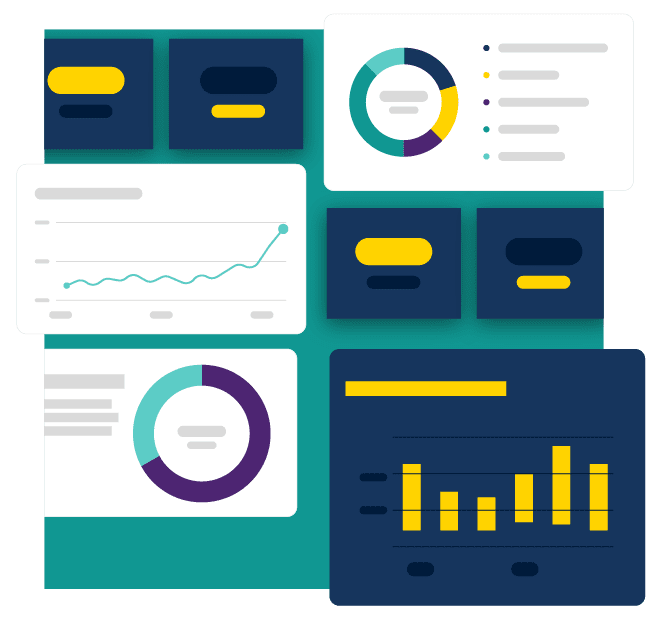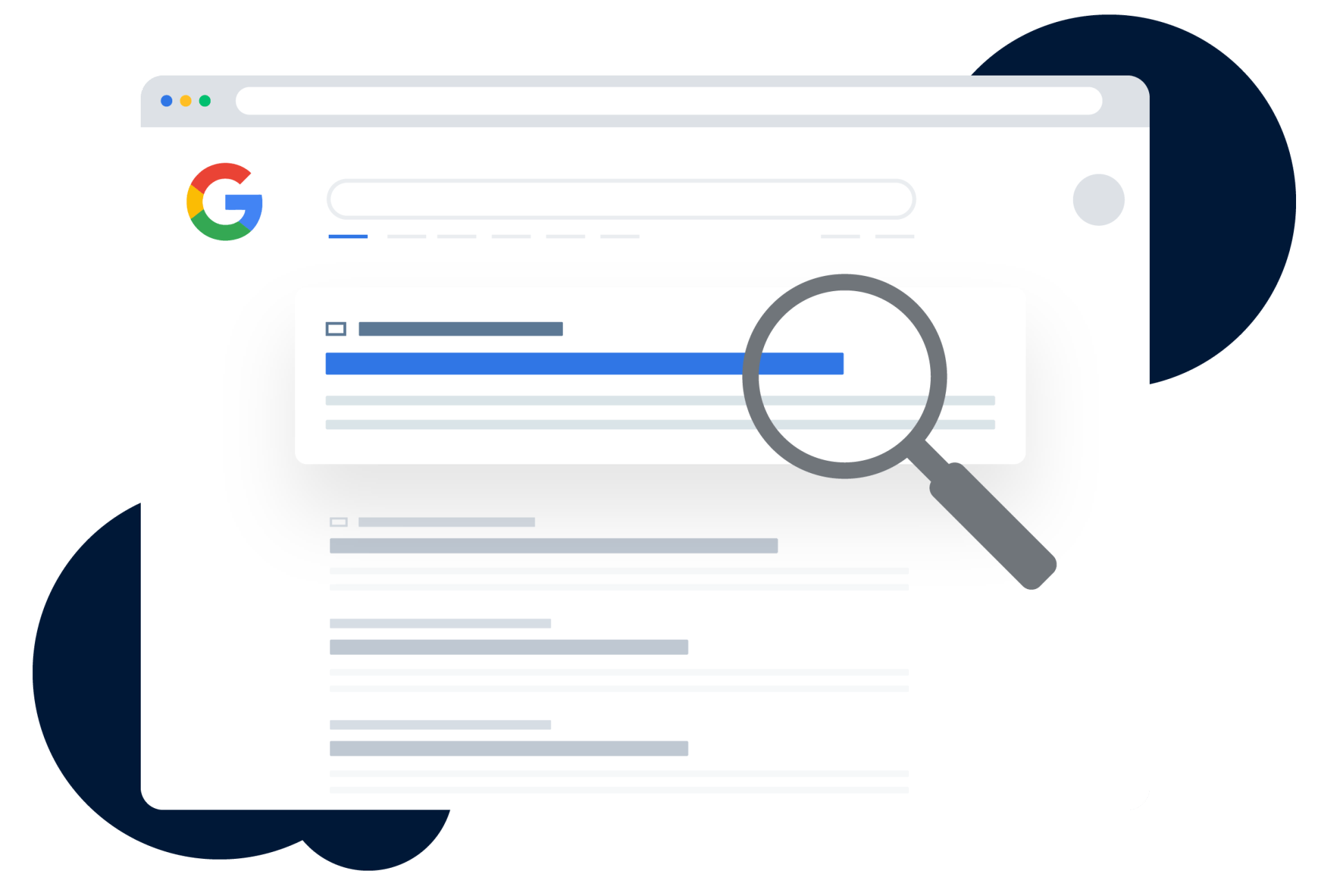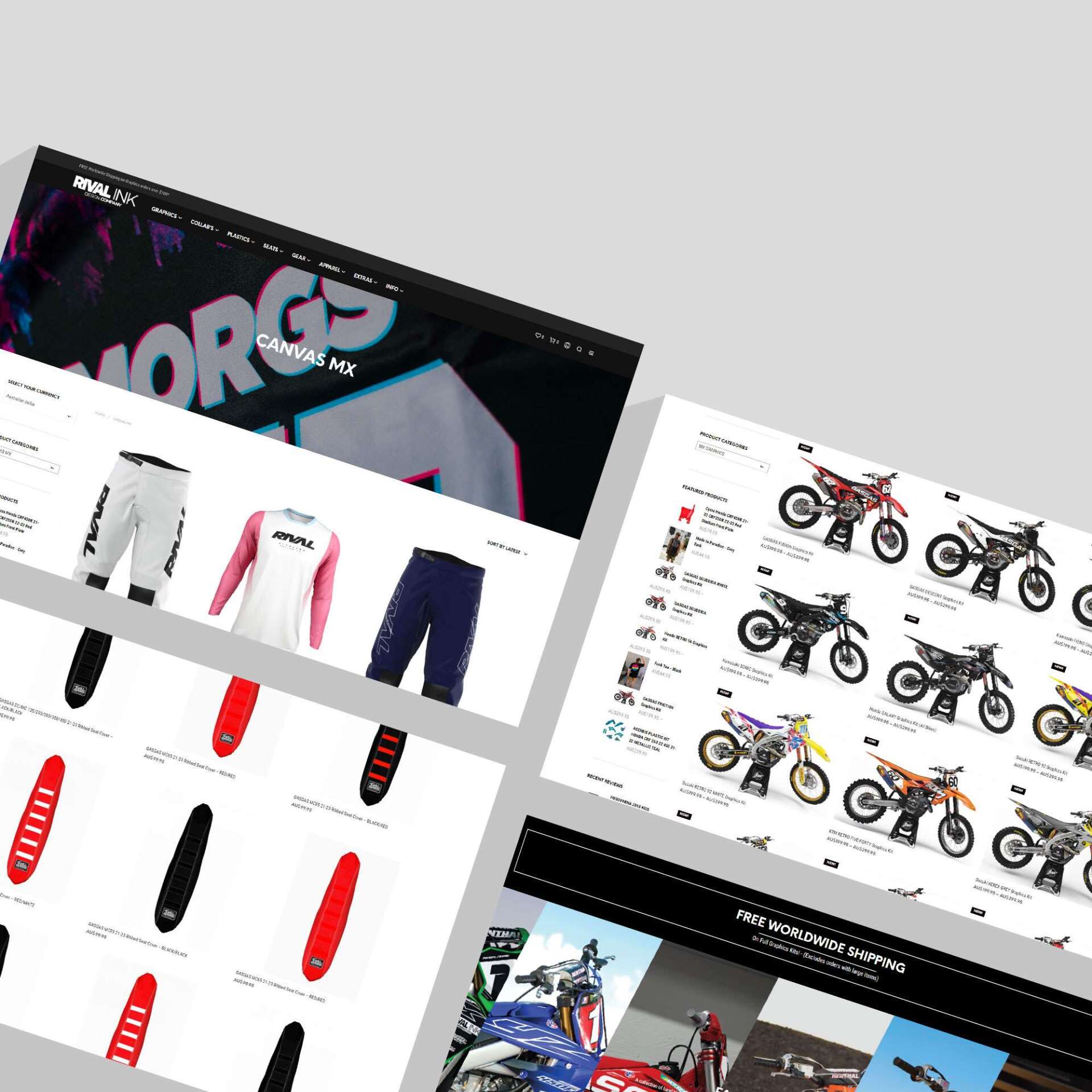Smart Spending: Measuring and Improving Your Marketing ROI

Why Your Marketing ROI Determines Your Business Success

Maximise marketing ROI isn't just a marketing buzzword—it's the difference between thriving and merely surviving in today's competitive landscape. Every dollar you spend on marketing should work harder for your business, yet many small business owners struggle to prove their marketing investments are actually paying off.
Quick Actions to Maximise Marketing ROI:
- Track the right metrics - Focus on Customer Lifetime Value (CLV), Customer Acquisition Cost (CAC), and conversion rates rather than vanity metrics.
- Implement proper attribution - Use multi-touch attribution to understand which channels truly drive conversions.
- Optimise high-performing channels - Double down on channels delivering 5:1 ROI or better while cutting underperforming spend.
- Leverage automation and testing - Use A/B testing and marketing automation to continuously improve campaign performance.
The numbers tell a compelling story: businesses using data-driven marketing strategies achieve a 15% increase in ROI on average, while companies implementing structured experimentation see a 30% improvement in ROI. Yet many business owners remain frustrated with their marketing results, unsure whether their investments are generating real returns.

Understanding marketing ROI isn't just about calculating a simple formula—it's about making informed decisions that drive sustainable growth. When you can accurately measure what's working and what isn't, you transform marketing from a cost centre into a profit driver. This shift from hoping your marketing works to knowing it works gives you the confidence to invest in growth strategies that deliver measurable results. Success comes from balancing data-driven insights with practical execution to create marketing systems that consistently deliver measurable growth.
Understanding Marketing ROI: The Foundation of Smart Spending
Think of marketing ROI as your business compass—it points you toward profitable decisions and away from costly mistakes. Marketing ROI , or Return on Investment, measures how much revenue you generate for every dollar spent on marketing activities. It's the metric that transforms marketing from a hopeful expense into a strategic profit driver.
When you maximise marketing ROI , you're essentially making your marketing budget work smarter, not harder. The basic formula is straightforward: take your marketing-generated revenue, subtract your marketing costs, then divide by those costs. If you spend $1,000 on a campaign and generate $5,000 in revenue, your ROI is 400%—meaning you made $4 for every dollar invested.
But here's where it gets interesting. According to industry research, a strong ROI benchmark sits at 5:1 , while an exceptional ROI benchmark reaches 10:1 . These numbers aren't just statistics—they're your targets for what constitutes a good marketing ROI.
Marketing ROI serves three critical functions in your business. First, it justifies your marketing spend by providing concrete evidence that your investments generate real returns. Second, it guides resource allocation by showing which campaigns and channels deliver the best results. Finally, it demonstrates value by proving marketing's tangible contribution to your bottom line.
Why Tracking ROI is Essential for Business Growth
Imagine driving with your eyes closed—that's essentially what running marketing campaigns without ROI tracking feels like. When you consistently monitor your marketing returns, you gain the power to make informed decisions based on actual performance data rather than gut feelings or industry assumptions.
ROI tracking becomes your budget justification tool, especially when leadership questions marketing expenses. Instead of defending costs, you can showcase profitable returns. This data-driven approach transforms conversations from "marketing is expensive" to "marketing is generating X% returns on our investment."
The real magic happens in strategic planning . With solid ROI data, you can confidently identify successful tactics and replicate them across different campaigns or channels. You'll spot patterns—perhaps your Google Ads Management campaigns perform exceptionally well on Tuesdays, or your Leads SEO efforts show stronger returns in specific geographic areas.
This systematic approach to measurement allows you to optimise budgets continuously, shifting resources from underperforming areas to proven winners. As highlighted in our guide on why digital marketing is your small business's new best friend , embracing measurement capabilities transforms marketing from guesswork into a precise, strategic function essential for scalable growth.
ROI vs. ROAS: Understanding the Difference
Here's where many business owners get confused— ROI and ROAS sound similar but measure different aspects of your marketing performance. Understanding this distinction helps you make smarter decisions about where to invest your marketing budget.
Return on Investment (ROI) takes a comprehensive view of your marketing efforts. It includes everything: your Google Ads spend, marketing software subscriptions, team salaries, and creative production costs. ROI gives you the holistic view of whether your entire marketing operation is profitable.
Return on Ad Spend (ROAS) , on the other hand, focuses specifically on advertising costs. If you spend $500 on a Facebook ad campaign and generate $2,000 in sales directly from that campaign, your ROAS is 4:1. It's a campaign-specific view that helps you optimise individual advertising efforts.
Think of it this way: ROAS tells you if your ads are working, while ROI tells you if your marketing as a whole is profitable. You might have a fantastic ROAS of 8:1 on your ads, but if you're spending heavily on expensive marketing tools and large team salaries, your overall marketing ROI might be much lower.
Both metrics matter, but for different reasons. Use ROAS to optimise individual campaigns and ad spend decisions. Use ROI to evaluate your total marketing investment and make strategic business decisions about marketing budget allocation. When you maximise marketing ROI effectively, you're looking at both metrics to ensure every dollar contributes to profitable growth.
How to Accurately Measure Your Marketing Performance
Getting your marketing measurement right is like having a GPS for your business growth. Without accurate data, you're essentially driving blindfolded, hoping you'll reach your destination. With the right approach to data collection, attribution models, and metric tracking, you can transform marketing from a guessing game into a predictable growth engine.
Think of measurement as your marketing compass. It tells you not just where you've been, but where you're heading and whether you're on the right path. When done properly, measurement reveals which efforts truly drive revenue and which are simply burning budget.
The Basic ROI Calculation and Beyond
Starting with the fundamentals, the basic marketing ROI formula is straightforward: Marketing ROI (%) = ((Revenue Generated - Marketing Cost) / Marketing Cost) x 100 .
If your campaign generated $50,000 in revenue and cost $10,000 to execute, your ROI would be 400%. While this seems simple enough, real-world measurement is rarely this clean-cut.
The challenge with basic ROI calculations is that they don't account for organic growth —the sales that would have happened anyway. This is where campaign-attributable ROI becomes crucial. Instead of crediting your entire revenue increase to marketing, you subtract the natural business growth that would have occurred regardless. This gives you a clearer picture of your marketing's true incremental impact.
Another complexity lies in the time lag between marketing activities and their results. A customer might see your Google Ad today, visit your website next week, and finally make a purchase three months later. This is where multi-touch attribution becomes invaluable. Rather than giving all the credit to the first or last touchpoint, multi-touch models distribute credit across all the interactions that influenced the purchase decision, giving a more realistic understanding of how each channel contributes to your success and helps you maximise marketing ROI .
Key Metrics You Must Track for an Accurate Picture
Beyond basic ROI, several critical metrics provide deeper insights into your marketing effectiveness. These aren't just numbers on a dashboard—they're the vital signs of your business growth.
- Customer Acquisition Cost (CAC) tells you exactly how much you're spending to bring in each new customer. A rising CAC without a corresponding rise in customer value is a red flag.
- Customer Lifetime Value (CLV) represents the total revenue you can expect from a customer. A healthy CLV-to-CAC ratio is a strong indicator of long-term profitability.
- Conversion Rate measures the percentage of visitors who take a desired action, revealing how well your marketing messages resonate with your audience.
- Marketing Efficiency Ratio (MER) provides a bird's-eye view by dividing total revenue by total marketing spend, offering a comprehensive efficiency snapshot to guide strategic budget decisions.
Overcoming Common Measurement Challenges
Even with the best intentions, measuring marketing performance comes with significant problems. The modern digital landscape presents unique challenges that can distort your data.
Attribution complexity tops the list. Today's customers interact with a brand across multiple touchpoints—social media, search, email, and ads—before converting. Determining which touchpoint deserves credit requires sophisticated tracking systems.
Tracking offline conversions , such as phone calls or in-store visits that originate from digital campaigns, presents another major challenge. Connecting these offline actions to your digital marketing efforts requires careful implementation.
Data silos create fragmented views of customer behaviour. When your website analytics, CRM, and advertising accounts don't communicate, it's nearly impossible to see the complete customer journey or calculate accurate ROI.
Modern privacy updates and ad blockers compound these challenges by disrupting traditional browser-based tracking. Server-side tracking offers a robust solution. Unlike browser-based tracking that relies on cookies, server-side tracking sends data directly from your server to advertising platforms, bypassing many browser restrictions and improving data accuracy.
By implementing robust tracking solutions and understanding these common pitfalls, you can build a measurement system that provides reliable insights for optimising your marketing efforts, as outlined in The Ultimate Guide to Boosting Website Conversions: Strategies & Best Practices.
Proven Strategies to Maximise Marketing ROI
Achieving exceptional marketing ROI isn't a matter of chance—it's the result of strategic optimisation, careful data analysis, intelligent channel management, and an unwavering commitment to continuous improvement. After working with businesses across Australia, New Zealand, the US, and Canada, we've identified three core strategies that consistently help companies maximise marketing ROI .
Think of these strategies as the three pillars of marketing success. When you implement all three together, they create a powerful foundation that transforms your marketing from guesswork into a predictable growth engine.
Strategy 1: Harness Data to Maximise Marketing ROI with Precision Targeting
Data has become the ultimate competitive advantage in today's digital landscape. When you leverage it effectively, you transform generic campaigns into highly relevant, impactful interactions that speak directly to your customers' needs and desires.
Organisations using data-driven marketing strategies achieve a 15% increase in ROI on average. This improvement comes from understanding exactly who your customers are and what motivates them to buy.
Audience segmentation forms the foundation of this approach. Instead of casting a wide net, data allows you to divide your audience into distinct groups based on demographics, behaviours, and purchase history. Building on segmentation, personalisation takes your marketing to the next level by delivering highly individualised content. Personalised email campaigns, for example, deliver six times higher transaction rates than generic ones.
By investing in advanced analytics tools, you gain actionable insights into consumer behaviour, preferences, and trends. This enables you to refine your targeting, optimise your spend, and create campaigns that consistently deliver measurable results and form the basis of effective digital marketing strategies.
Strategy 2: Optimise Your Channel Mix and Content Strategy
In today's interconnected world, most consumers use multiple channels during their shopping journey. This reality makes a multi-channel marketing approach not just beneficial, but essential for business success.
Multi-channel marketing means integrating various touchpoints—social media, email, search, and mobile—to create a cohesive brand experience. The goal is simple: be present where your customers are, providing a seamless journey across all touchpoints.
Your content strategy plays a vital role in this ecosystem. Businesses with a documented content strategy are twice as likely to report higher ROI from their content marketing initiatives. This isn't about creating more content—it's about creating the right content that resonates with your audience.
When discussing high-ROI channels, several consistently outperform others. SEO marketing stands out as a long-term strategy that builds authority and drives highly qualified traffic, representing one of the most profitable channels available. RankingCo offers comprehensive services including Leads SEO and eCommerce SEO to help businesses achieve top rankings.
Email marketing continues to deliver exceptional results, generating an impressive average ROI of $36 for every $1 spent. It remains an incredibly cost-effective way to nurture leads and drive conversions.
Paid advertising channels like Google Ads offer immediate visibility and highly targeted reach. While the average ROI hovers around 200%, the ability to deliver instant traffic and precise measurement makes it invaluable. RankingCo specialises in Google Ads Management and Microsoft Ads, ensuring your advertising spend is optimised for maximum return.
Strategy 3: Accept Technology to Maximise Marketing ROI through Experimentation
The marketing landscape evolves constantly. To consistently maximise marketing ROI , businesses must accept a culture of continuous testing and experimentation.
A/B testing forms the backbone of this approach. By comparing two versions of a marketing asset—whether it's a website page, email subject line, or ad copy—you can gather data about what truly resonates with your audience. Companies implementing structured experimentation processes achieve a 30% improvement in ROI .
Marketing automation streamlines repetitive tasks like email sequences and lead nurturing. This technology frees up your team to focus on strategic initiatives and analysis, providing deeper insights into campaign performance.
Artificial intelligence is rapidly changing how we approach marketing efficiency. AI-powered tools analyse vast datasets to identify patterns, predict consumer behaviour, and optimise campaigns in real-time. Google's Smart Bidding strategies exemplify this power, leveraging AI to automatically adjust bids to help achieve specific conversion goals. Understanding how Smart Bidding works is crucial for leveraging this technology effectively.
At RankingCo, we integrate advanced AI technologies to improve the efficacy of our digital marketing strategies. This allows us to analyse market trends accurately and create effective campaigns for our clients across Australia, New Zealand, the US, and Canada.
Frequently Asked Questions about Marketing ROI
When it comes to maximising marketing ROI , business owners often have similar questions and concerns. Here are the most common queries we encounter, along with practical answers that can help you make smarter marketing decisions.
What is considered a good marketing ROI?
A good marketing ROI is generally considered to be 5:1 , meaning you generate $5 in revenue for every $1 spent on marketing. An ROI of 10:1 is exceptional and represents highly efficient marketing performance. However, these benchmarks can vary significantly depending on your industry, business model, and profit margins.
For example, a business with high-profit margins might be comfortable with a 4:1 ROI, while a business with thin margins would need a much higher return to remain profitable. The key is understanding your break-even ROI based on your specific business costs and growth goals. It's also important to consider the timeframe, as some efforts like SEO deliver substantial long-term value.
How do digital marketing channels improve ROI?
Digital channels such as SEO and Google Ads Management consistently deliver superior ROI compared to traditional marketing methods. This advantage stems from three key factors: precise audience targeting , detailed performance tracking , and real-time optimisation capabilities .
Unlike traditional advertising, digital channels allow you to target specific demographics, interests, and behaviours with remarkable precision. The ability to track every interaction provides unprecedented visibility into campaign performance, enabling you to double down on what works. Perhaps most importantly, digital campaigns can be optimised in real-time, ensuring your marketing spend is always working as efficiently as possible.
How can I improve my ROI if my budget is small?
Small marketing budgets require a strategic focus on high-leverage, low-cost strategies that deliver significant returns. The key is choosing tactics that compound over time.
Optimising your website for organic search through SEO represents one of the most cost-effective long-term strategies. While SEO requires patience, it builds sustainable traffic that doesn't require ongoing advertising spend. For local businesses, Leads SEO can deliver particularly strong returns by connecting you with nearby customers.
Building a targeted email list should be a priority. Email marketing consistently delivers exceptional ROI. Focus on growing your list organically through valuable content offers, then nurture these leads with personalised, helpful content.
Creating valuable content that can be repurposed across multiple channels maximises your investment. A single blog post can become social media posts, email newsletter content, and more. The most important principle is to start with one or two channels and execute them excellently, rather than spreading resources too thin.
Take Control of Your Digital Future – Get Found Now

The journey to maximise marketing ROI demands a strategic partnership with experts who understand the complexities of today's digital landscape. The path forward is clear: implement precision targeting through data analysis, optimise your channel mix with high-ROI channels like SEO, and accept technology to continuously improve your results.
Many business owners struggle with the technical complexities of attribution, tracking, and multi-channel optimisation. This is where a strategic partnership becomes invaluable. Rather than navigating the ever-changing digital landscape alone, successful businesses partner with agencies that live and breathe these challenges daily.
As the world's best little digital agency, RankingCo has spent over 15 years helping startups and scaling businesses achieve remarkable growth. From our headquarters in Brisbane, we serve clients across Australia, New Zealand, the United States, and Canada, developing strategies that consistently deliver exceptional results.
Our approach to helping businesses maximise marketing ROI goes beyond standard services. We provide full-funnel marketing expertise that encompasses everything from technical SEO and local search to sophisticated paid advertising campaigns across Google, Meta, and LinkedIn. Our integration of advanced AI technologies allows us to analyse market trends with unprecedented accuracy and create campaigns that adapt to changing consumer behaviours in real-time.
If you're ready to take control of your digital future and achieve the exceptional marketing ROI your business deserves, we're here to help. To learn more about how our full-service digital marketing agency can accelerate your business growth, please contact us today.















